World Trade Center Ship Documentation
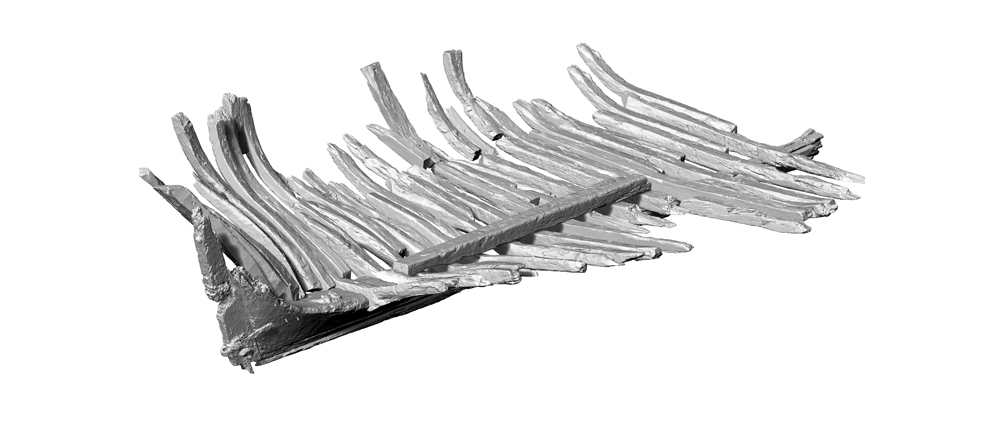
When the timbers first arrived to the CRL in April of 2011, they were inventoried and photographed. In addition to this, shipwreck timbers are typically traced at a 1:1 scale, and measurements and details are added to those drawings.
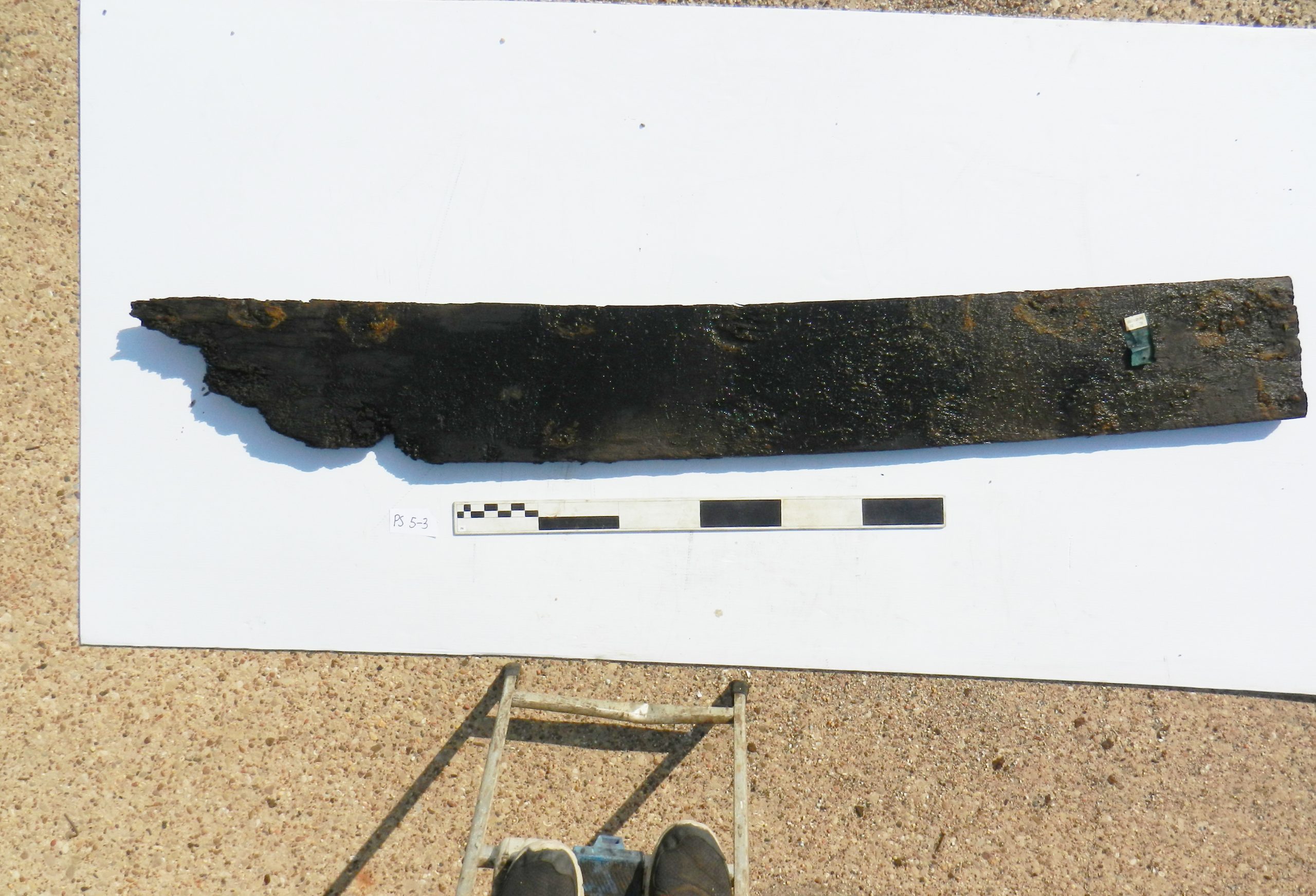
For this project, we decided to try something new, and create a high-definition laser scanned 3D model of each timber using a FARO arm with a laser scanner attachment. Each timber was scanned at least twice, and then scientists at the lab processed the scan data to create highly accurate 3D models of each and every timber.
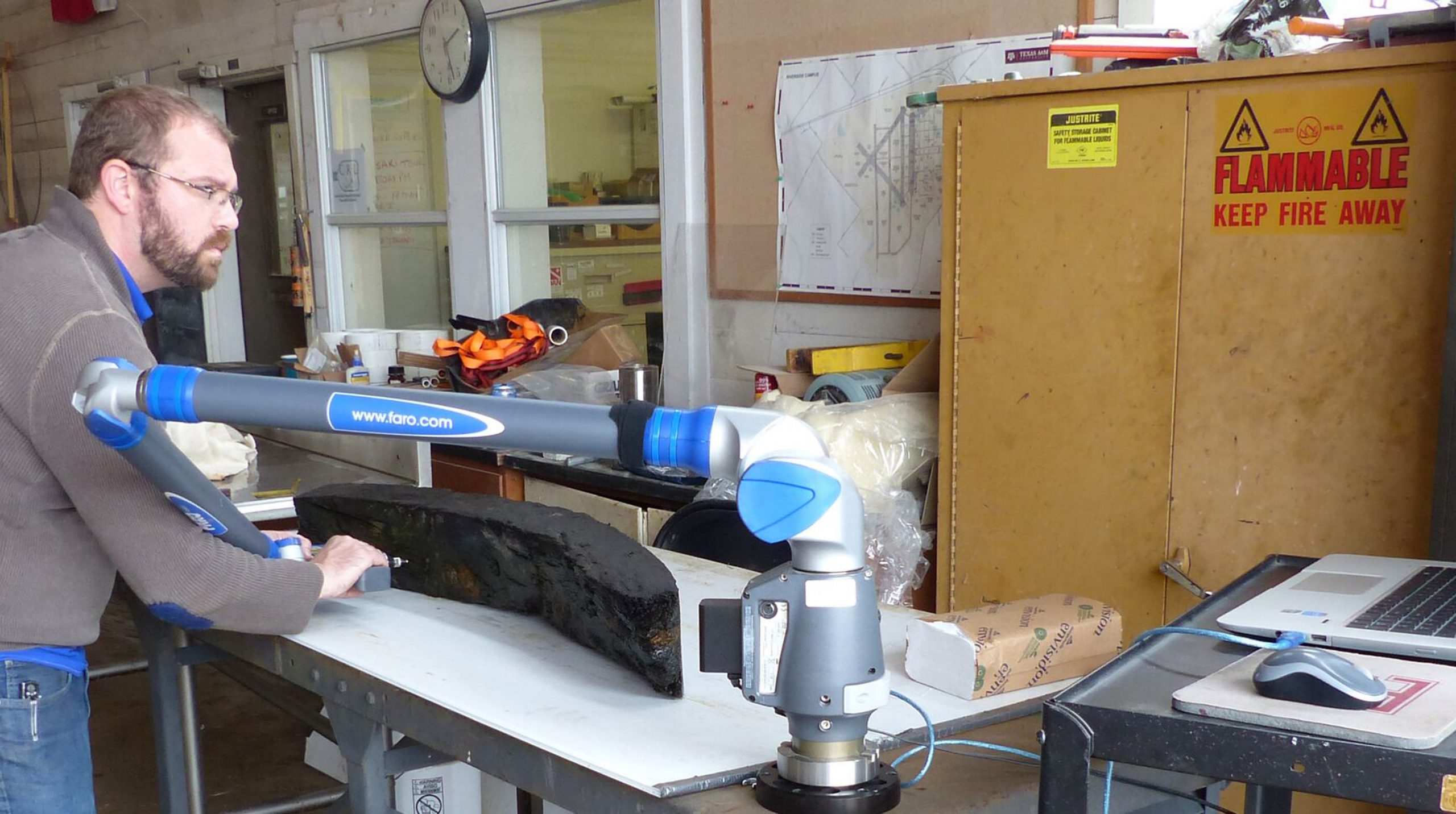
Once the timber models were complete, researchers virtually reassembled the ship, and used that virtual model to derive a set of ships lines for the part of the hull that survived. Those lines were then used as the basis for a theoretical reconstruction of the ship, and a wooden model of the ship is now being constructed.
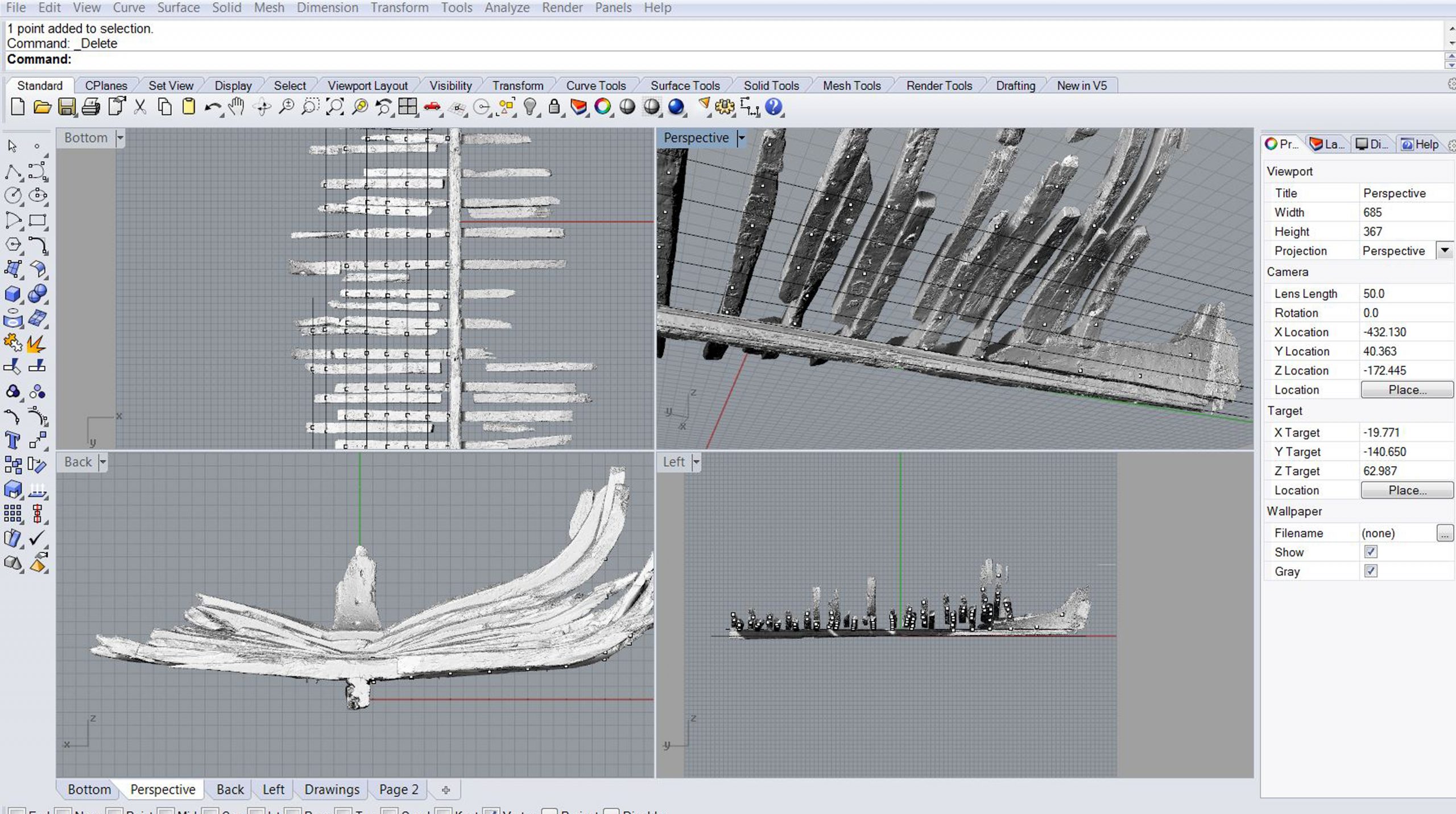
Additionally, the digital models were 3D printed at a 1:10 scale, and these 3D prints are being used to build a physical model of what the ship looked like as it was found.

Below is an example of the types of models produced for each timber.
These models were also used to make traditional 2D timber drawings, as seen below:

Additionally, several of the timbers have been X-rayed to help researchers understand how the ship was built. The world trade center ship was built with very few transverse fasteners between the floors and the futtocks; i.e. the segments of the 'ribs' that make up the skeleton of the ship were not attached to one another, they were only attached to the planking. By X-raying the floors and futtocks, we were able to determine the pattern of transverse fasteners used.
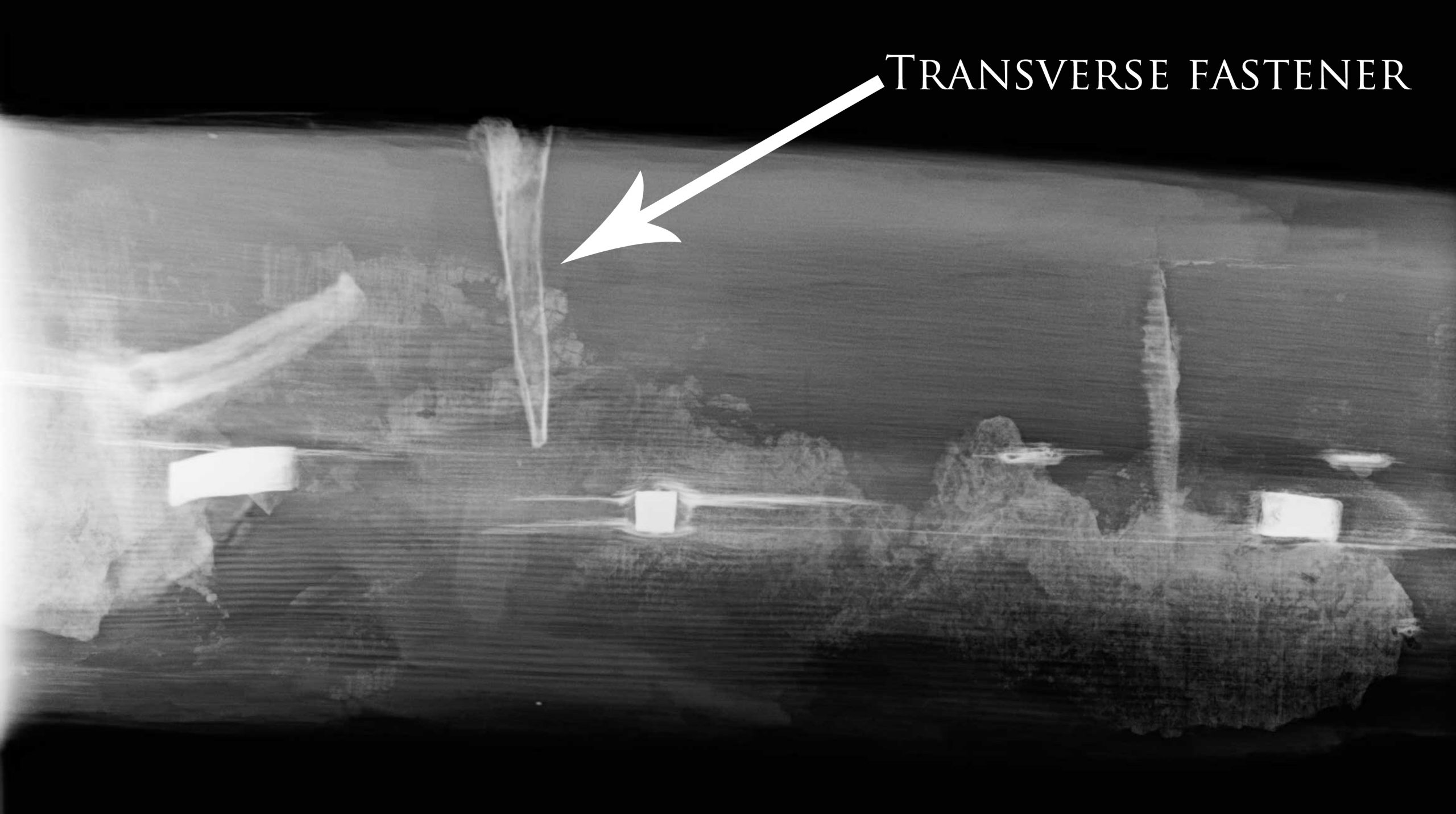
Conservation Stages
⇒ Stage 1: Documentation
Stage 2: Mechanical Cleaning
Stage 3: Chemical Chelation
Stage 4: Bulking
Stage 5: Freeze Drying
Stage 6: Final cleaning and assembly
Contract Services
The CRL works with a variety of academic institutions, museums, historical societies, government offices, and private individuals. Our goal is to create viable conservation strategies of the highest standard that can be accomplished at minimal cost. For more information, visit our services page.
Read about the faculty and conservators who run the Conservation Research Labratory. We are also aided by several individuals who volunteer their time to help conserve artifacts. If you are interested in joining the volunteers at the CRL, please contact our lab manager.
Support
Monetary donations and volunteer workers are vital to the ongoing success of the Conservation Research Laboratory. If you would like to volunteer your time and expertise, please write us here. If you would like to become one of our donors, please click the link below and direct your gift to: Center for Maritime Archaeology and Conservation.
